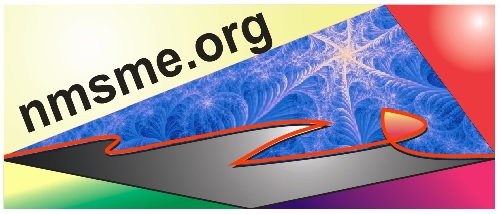Books
Computer Simulation Nanostructures: Bioferroelectric Amino Acids. Bioferroelectricity: Peptide nanotubes and thymine nucleobase.
Vladimir Bystrov
Introduction
Nowadays bio-ferroelectric phenomena are already widely known, although they have not yet been studied sufficiently deeply and clearly. This is due to the complexity of biological objects, their multicomponent and multi-hierarchical structure. At the same time, these phenomena include several clearly apparent ferroelectric and piezoelectric properties, such as the existence of spontaneous polarization and reversible weak-signal piezoelectric response accompanied with hysteresis behavior, which are often manifested in organic and biological systems.
To understand main features and laws of these phenomena in biology and in nano-scienses it becomes obvious that here it is necessary to find and select some simpler nanostructures from the entire complex set of biological objects and to study ferroelectric phenomena on such simplest biomimic systems and nanostructures. Among various biomolecular structures, amino acids (AA) and their various nanostructures (dipeptides, pepide nanotubes), as well as DNA nucleobases, were the first and a most simple systems under-lied in the field of the interest of the various researchers focused on the piezo- and ferroelectric phenomena in these biological objects. The simplest structures were glycine-based AA and thymine-based molecular nanostructures, that are also very imporant in view of prospective bioelectronic and biomechanical applications.
The focus in this book are on computational modelling and theoretical background of these piezoelectric and bioferroelectric phenomena in various AA, their nanocrystals and tubular peptide nanostructures. First, especial detailed interest are focused on glycine and their nanostructures. Second, computer modeling and quantum-chemical calculations were carried out by the first principles of the physical properties of several amino acids, their dipeptides, peptide nanostructures and nanotubes. Additionally, thymine-based nanostructures are considered too. All these studies are closely related to the recent experimental findings made by modern Atomic Force Microscopy (AFM) and Piezoresponse Force Microcopy (PFM).
This book continue a series of our study published in the previous book by Bystrov V.S. “Computer Simulation Nanostructures: Bioferroelectric Peptide Nanotubes. Bioferroelectricity: Peptide Nanotubes.” – LAP Lambert Academic Publishing. – Saarbruecken, Germany, 2016. The book focuses primarily on the computational studies, computer modeling and calculations of the complex molecular/biomolecular structures based on amino acids and its physical properties, but it is used and numerous experimental data. Besides AA, was considered thymine structures as example of the DNA nucleobase. Computational molecular modeling and calculations of the principal physical properties (dipole moment, polarization, piezoelectric coefficients, equilibrium energies, etc.) were made on the basis of HyperChem 7/8 package with a wide set of molecular mechanical and quantum-chemical approaches including various Hartree-Fock approximations, first-principle density functional theory (DFT) methods and semi-empirical parametrization (such as PM3, ZINDO, etc.). Modeling and calculations of the crystallographic data, crystal structure and corresponding physical properties were made from first principle calculations using a local density approximation (LDA) of the density functional theory (DFT) in AIMPRO code. The structural models obtained and the physical data computed (polarization, dielectric permittivity, piezoelectric coefficients, etc.) are analysed and compared with experimental data obtained by PFM.
The author thanks his colleagues and co-authors on this joint work: Bdikin I.K., Kopil S.A., Coutinho J., Seyedhosseini E., Pullar R.C., Paramonova E.V., Kholkin A.L., Sapronova A.V., Green M. E. and many others. Special thanks to the author brings to Fridkin V.M. and Leuchtag H.R. for fruitful cooperation during a long time period. Author thanks the Pushchino Research Center of Russian Academy Sciences for the support of this new scientific branch – bioferroelectricity, the state assignment 0017-2019-0009 in Keldysh Institute of Applied Mathematics RAS, the Russian Foundation for Basic Researches (RFBR) 15-01-04924_A, 19-01-00519_A and the Portuguese Foundation for Science and Technology (FCT) for financial support in many projects, particularly, personal grant SFRH/BPD/22230/2005.

